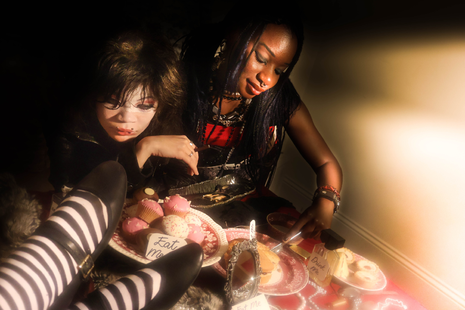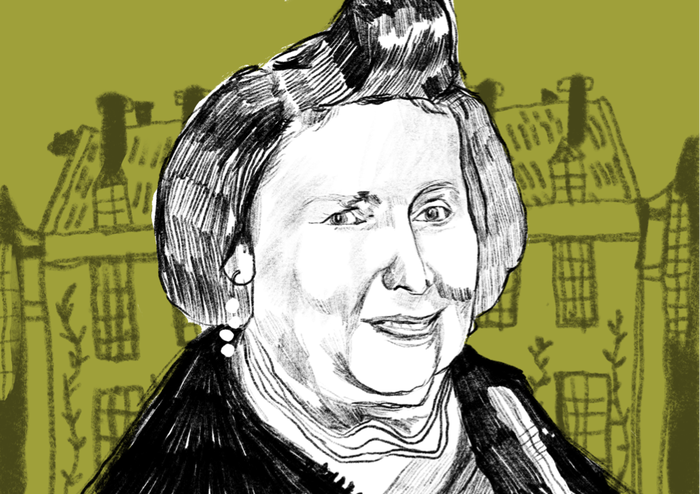Have you ever been called an emo? Even if you have never adopted the style, I am willing to bet that anyone who was just a little too fond of black eyeliner in high school would recognise that annoyingly familiar heckle – EMO! However slanderously this may have been intended, I find that emo fashion offers refreshing presence in every walk of life, but is notably rare on the streets of Cambridge…
Of course, having the word emo shouted at you across a high school corridor had really very little to do with the actual subculture, which grew to mainstream popularity (and infamy) during the early 2000s. Emo began as a music genre in the 1980s and 1990s, a descendant of hardcore punk and post-hardcore with an angsty and sensitive twist – emos turned the destructiveness of punk in onto themselves. In the decades which followed, it expanded into a fashion and a lifestyle, most famous for jet-black bangs, eyeliner, band tees, skinny jeans, and androgynous styles. From the outset, it was the genre of the outcast and the misanthrope, and as it became most popular in the 2000s, emo was remarkable for being widely hated by both traditional adults and ‘normie’ teens. For them, there was a fine line between emo simply expressing the inevitable angst of adolescence, and cultivating serious struggles with mental health; the impassioned backlash to the culture was described by The Guardian as an induced “moral panic”.
“Emo is the quintessential teen subculture of our modern age”

However, emo was not only controversial to wider society – even within the subculture there was constant debate over what actually was ‘emo’ and what wasn’t. The high school heckler might not have been able to distinguish an emo from a goth or a scene kid (or anyone who just likes to wear black), but alternative people must also admit that ‘emo’ is an incredibly expansive term, drawing from a whole host of other subcultures, connected in some ways with punk, goth, scene, grunge, indie, and even geek-chic styles. Emo is fascinating because it is one of the last big youth subcultures which is created from fashion, music, attitude, and lifestyle, and simultaneously one of the first styles to grow to mainstream popularity across the world using the internet. Unapologetically angsty, online and fundamentally modern, yet built on a rich backdrop of music and style, and somehow appealing both to those doing drugs in a field and those scrolling on the internet all day, emo is the quintessential teen subculture of our modern age.
You may be wondering how such a uniquely well-rounded subculture became a senseless insult directed at anyone dressed in a vaguely alternative fashion. However, another aspect of emo which is incredibly impressive to me is the way they embrace and built their style on a willingness to be genuinely socially excluded. Particularly as a teenager, this means rejecting entirely the desire to fly under the radar at the point in adolescence where everyone is most insecure – and judgemental. I have genuine reverence for young people who are able to not only dress alternatively but in fashions which are deliberately unconventional and provocative. Although it may have been some parents’ worst nightmare, I would be rather happy if my child turned thirteen and started listening to My Chemical Romance and adopted a rather aggressive side-part.

It is for these reasons that I like to see emo fashion when I am out. Upon arriving in Cambridge, I was soon distressed to note the apparent and dire lack of emos in comparison to my hometown. This led me to wonder whether there was something about Cambridge which meant that it didn’t attract many people interested in the emo fashion and lifestyle…
“Upon arriving in Cambridge, I was soon distressed to note the apparent and dire lack of emos”
It is impossible to know with any certainty, but my hypothesis is that more people here than you’d think are secret ex-emos. It’s true that emo is a style dominated by teenagers, so perhaps its unsurprising that many students no longer align themselves with emo fashion, even if they have a history with it. However, I think that even being an ex-emo, and experiencing important adolescent years from an alternative perspective, can be hugely beneficial to someone’s personal use of fashion. Ex-emos often remain bold and alternative, but let their own unique sense of style grow from their staunch emo roots. Emo is never ever just a phase.
If you are indeed an ex-emo, perhaps you should look more fondly on the time you spent as a fiercely alternative teen, as it may be contributing significantly to the way you think about fashion today. And, if you want to elevate your fashion and you’ve never had an emo phase, there’s no time like the present…


